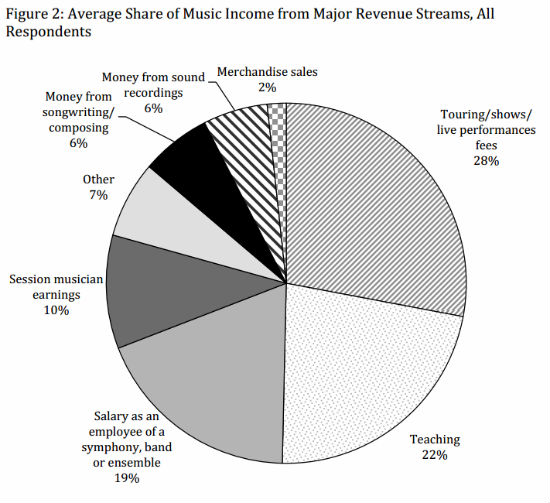The concept of “free Internet” is probably one of the biggest debates of this century, whether on the net-neutrality front or a more direct access to content without ridiculous fees.
You may have noticed at the bottom of my posts a new little button: Flattr.
As previously mentioned, this is to bring the idea of social micro-donations forward, especially within a creative context and towards creative people.
The concept of Flattr is simple.
You set a monthly donation limit, say $15, that you put on Flattr.
Then you go about your online life. Browsing, clicking, reading, viewing, listening.
If you encounter compelling/insightful/interesting/cool content, you click on the Flattr button on that post/site (equivalent to “liking” something).
At the end of the month, the donation is split between all the Flattr content you selected. If you clicked on 10, they would get $1.50 each; 100 is $0.15. You get the idea. Clicking a Flattr button never increases the fee/donation you’re paying, it merely splits it. Sharing the love.
Sadly, there is not a true 100% thru-rate in terms of incoming donation. Meaning if you’re the recipient of said donations, you only get 90%.
To be honest, those 10% fees are still lower than any other content distributor out there.
If we take the obvious example of music, last year, TuneCore issued a guide online on “13 different ways to make money from your songs.” The company has arrangements with online digital music retailers (Amazon MP3, Napster, iTunes, etc.). Here is the document:
Interestingly, they do not specifically list fees for sales on, say, iTunes. Only royalties and the like.
It turns out that for a single song price of $0.99, $0.34 goes to Apple with 12% of the leftover wholesale markup going to the artist (in this case $0.10).
In other words, nearly 35% of the price you pay on iTunes goes to Apple with barely a tent of it going to the artist.
For a self-released MP3 download on iTunes, you can get up to $0.68, which is a huge improvement, however there are many, better options out there if you are going to self-release online.
A study by Professor Peter DiCola from Northwestern showed last month that only 6% of the “average share of music income” of musicians comes from sound recordings.
Here’s the fancy graphic:

Of course this is merely based on non-major record artists (since we are here talking about an independent aspect to creativity). Bands may make most of their money via tours and merchandising, but if a direct service of customer-to-content exists, the financial incentive to self-publish becomes greater.
One may say that name recognition is another factor on why “small-time” artists end up going through TuneCore and the like to “self-publish.” Yet, it is doubtful that iTunes gives any publicity leg-up to unknown bands.
YouTube isn’t even better with its sponsors and revenue dependent on views and clicks.
Ultimately, the services offered for small artists to monetize their content are rarely worthwhile.
Which brings us back to Flattr.
This entire post may seem like either some kind of ad for Flattr or a way to desperately monetize the blog.
It is neither.
For one thing, I don’t expect to make any money from Flattr. I assume only a fraction of people reading this (if any) is going to visit the Flattr website, let alone register, put money in and click back through my blog. I’ll be publishing any results (or lack thereof) in the coming months. The system is also very European-oriented (the default currency currently used is the Euro, not the Dollar).
More importantly though, I’ve been hosting on my own dime this pretty big website, with no ads, for almost five years now. Clearly if I wanted to monetize the site I would have done so a long time ago.
I simply really like the concept of Flattr. Beyond the social aspect given to micro-financing, it is, in my mind, a way of reinventing the way any creativity can be rewarded online.
In addition to the possibility of offering a direct monetization of creative content, such a social micro-donation service allows virtually anything to be financially helped. Anything can be “Flattrd” (especially through browser extensions).
Even a funny tweet, interesting video, or cool picture.
Unsurprisingly, the European-bent to the company is due to its founder, Peter Sunde (aka brokep) from Finland.
In case you’re not familiar with him, Peter Sunde is one of the co-founders of the notorious Pirate Bay website (one of the biggest BitTorrent trackers in existence).
[Speaking of, I definitely recommend the new documentary “TPB.AFK” about The Pirate Bay. Despite the name, the focus is not on the website itself, rather the three men behind it and their struggles with the copyright/judicial system. Big studios are clearly losing billions based on illegal downloads. Right?
Tying back to this theme, Flattr is also mentioned in the movie.]
Microloans have already changed the world. Micro-donations have the potential to change the way we interact with what we consume online, from articles to media.
This is a social financial experiment in creativity.
Although Flattr may not take-off in the States, I do believe in the idea behind the company.
This is not about what it does right now; it is about what it can do.
Viewers, readers, listeners able to directly reward and interact, one-on-one, with creators of the content they find most compelling, entertaining, engaging.
Isn’t that what a free Internet really is about?




